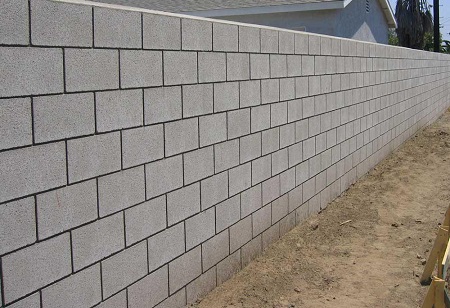According to a recent report, the Indian
AAC blocks market is anticipated to register a growth of INR 11095.0 crores at a CAGR of 14.3 per cent during the forecast period, 2020-2027.
AAC blocks are not a new invention as the product has been in the market since 1923. It has undergone significant development over the years and now it is being used as a green building construction material.
“Rising urbanization and industrialization are the major growth attributing factors of the AAC blocks market”, says G. Suresh Kumar, CEO, Renaatus Procon. Some of the other factors enhancing the growth of the market include developing infrastructure sector, increasing demand for lightweight construction materials and growing demand for the development of green buildings.
Growing Urbanization
Growing urbanization in major cities and decreasing chances of horizontal expansion of buildings are leading to more high-rise building projects in tier 1 cities and growing demand in tier 2 cities. Hence, it is positively impacting AAC blocks market. The increased living spaces required in the urban areas resulting from urbanization and the desire of middle class urban residents to improve their living conditions may have a profound effect on the housing market, and thereby increase the AAC blocks market in the country.
Also, changes in Goods and Services Tax (GST) has cut down prices of AAC blocks to 5.0 per cent as well as cut down in tax from housing purchase is boosting construction industry in short term period. Hence, it is positively helping AAC blocks to gain more market traction.
Energy Efficient Properties
Energy consumed for the production of AAC is less as compared to that for other building materials. AAC consumes approximately 50 per cent and 20 per cent less energy as compared to concrete and CMUs, respectively. Tiny air pockets and thermal mass of AAC offer thermal insulation that reduces construction costs related to heating and air conditioning. AAC blocks, owing to its energy efficient properties along with being fire resistant, termite or pest resistant, seismic resistant, lightweight, sustainable, quick and easy in application, is used in construction.
AAC reduces heating and cooling requirements by up to 30 per cent due to its thermal insulation properties, resulting in continued financial benefits during the life of the construction. Hence, AAC is the most energy and resource efficient building material. This is expected to drive the Autoclaved Aerated Concrete market during the forecast period.
Increasing Demand for Office Spaces
India is emerging as a thriving market for office spaces in the recent years. Demand for office spaces in India has been grown rapidly in the last few years. About 35 million square feet of office space was absorbed in 2019. The country has been receiving significant interest from foreign investors in the commercial construction Industry. Also, construction activities in the healthcare sector have been projected to register a growth rate of 3.5 per cent by 2024.
The growing adoption of sustainability in real estate sector in India coupled with over 23 per cent of office buildings in six major cities including Mumbai, Bangalore, Hyderabad, New Delhi, Chennai and Kolkata achieving green buildings certification in 2018 has stimulated the demand for AAC blocks.
Increasing Investment in Housing Sector
India is likely to witness an investment of around USD 1.3 trillion in housing over the next seven years, during which it is likely to witness the construction of 60 million new homes. The rate of availability of affordable housing is expected to rise to around 70 per cent by 2024. The Indian government’s ‘Housing for All by 2024’ is also a major game changer for the industry.
Challenges that can affect the Growth of AAC blocks Market
Higher Cost: Industry experts predict that the cost associated with AAC blocks is expected to restrain the growth of this market. The selling price of AAC blocks is higher than that of traditional clay bricks. Clay bricks account for a significant market share in building materials and are widely used as a construction material as they are cheaper as compared to AAC blocks.
Unorganised Sector: AAC is superior compared to other building materials based on various parameters. However, several contractors are not even aware of it and they continue using other building materials. More precision is required in the application of AAC. Also, the number of AAC production facilities is limited, particularly in North India. Moreover, a large part of AAC block market is still unorganised which may pose a threat to the growth of the Indian AAC blocks and non-reinforced panels market in the upcoming years.
Future of AAC blocks
AAC blocks are accepted by Indian market and its uses will grow stupendously in the coming years owing to increased awareness amongst the builders and architects about the several beneficial attributes of AAC blocks over clay and fly ash bricks. In a country like India where thermal power plants generates a lot of coal waste (fly ash), AAC blocks will be a blessing which uses fly ash as a raw material therefore the greener future of India lies in AAC block and is the future of India’s brick industry.
